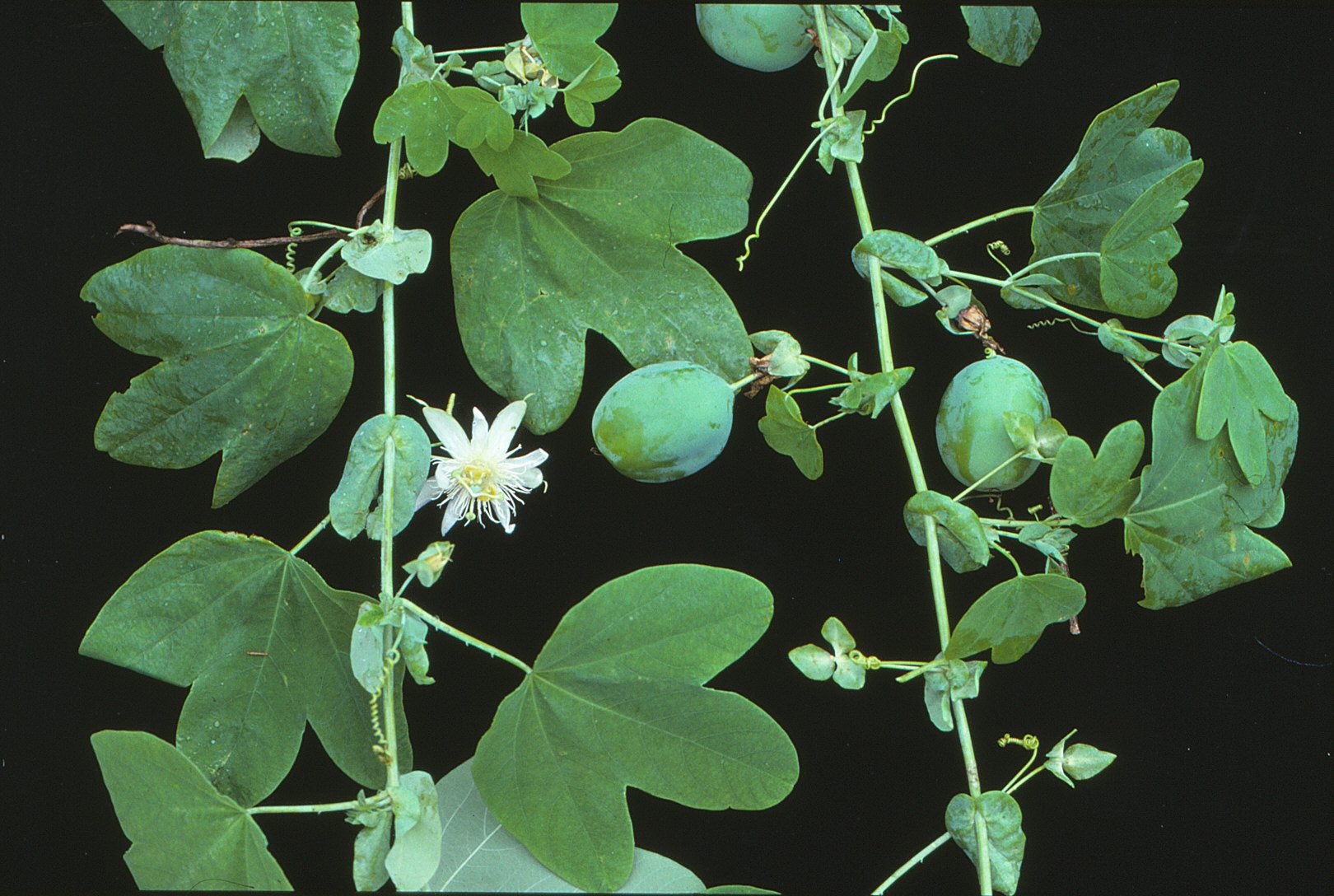White passion flower
Passiflora subpeltata, Fam. Passifloraceae

Perennial vines climbing with axillary tendrils. Stems to 5m long, more-or-less glabrous.
| Weed Category: |
Other invasive plants Invasive plants that are not prohibited or restricted invasive plants, but are known to spread readily and cause negative impacts, within the region.
|
| Weed: | Yes |
| Form or habit: | Vine (Climbing, Twining or groundcover) |
| Family: | Passifloraceae |
| Leaf: | Simple Alternate Alternate, simple. 3 lobed, rounded to heart shaped at base, 75-90 x 90-105mm, pale bluish-green, glabrous, leaf stalk 20-50mm long with 2-5 stalked glands. |
| Flower conspicuous: | Conspicuous |
| Flower colour: |
White |
| Flower description: | Typical passion flowers, 5-petalled borne singly in leaf axils. White, 40-60mm in diameter |
| Fruit conspicuous: | Conspicuous |
| Fruit colour: |
Green, Yellow |
| Fruit: | Fleshy |
| Fruit description: | Ovoid fleshy berries with numerous seeds surrounded by pulpy aril. Oblong, 20-60 x 30-50mm leathery, yellowish-green at maturity, seeds brown or black, about 4mm long imbedded in unpleasant smelling white or yellow pulp. |
| Habitat: | |
| Distribution | |
| Food source for: | |
| Toxicity: | Toxic if ingested |
| Origin: | West Indies and South America |
| Notes: | Spread by: birds, animals, water, garden waste, contaminated soil. Invades/threats: forest edges, creek lines, disturbed rainforest, open vegetation, coastal areas and crops. They often grow over vegetation forming a thick smothering cover that can lead to plant or crop death. Notes: not as widespread or as common as P. foetida and P. suberosa in this region. Suspected to be poisonous to humans and livestock if eaten in sufficient quantities. Red passion flower (P. aurantia), a local native species, also has similar 3-lobed leaves. However, it has showy creamy-salmon flowers aging to red, and the fruits are green or sometimes pinkish with grey pulp. Environmental weed. |
| Information sources: | Mackay Regional Pest Management Group (2018) Weeds of the Mackay Whitsunday Region Second Edition. |



